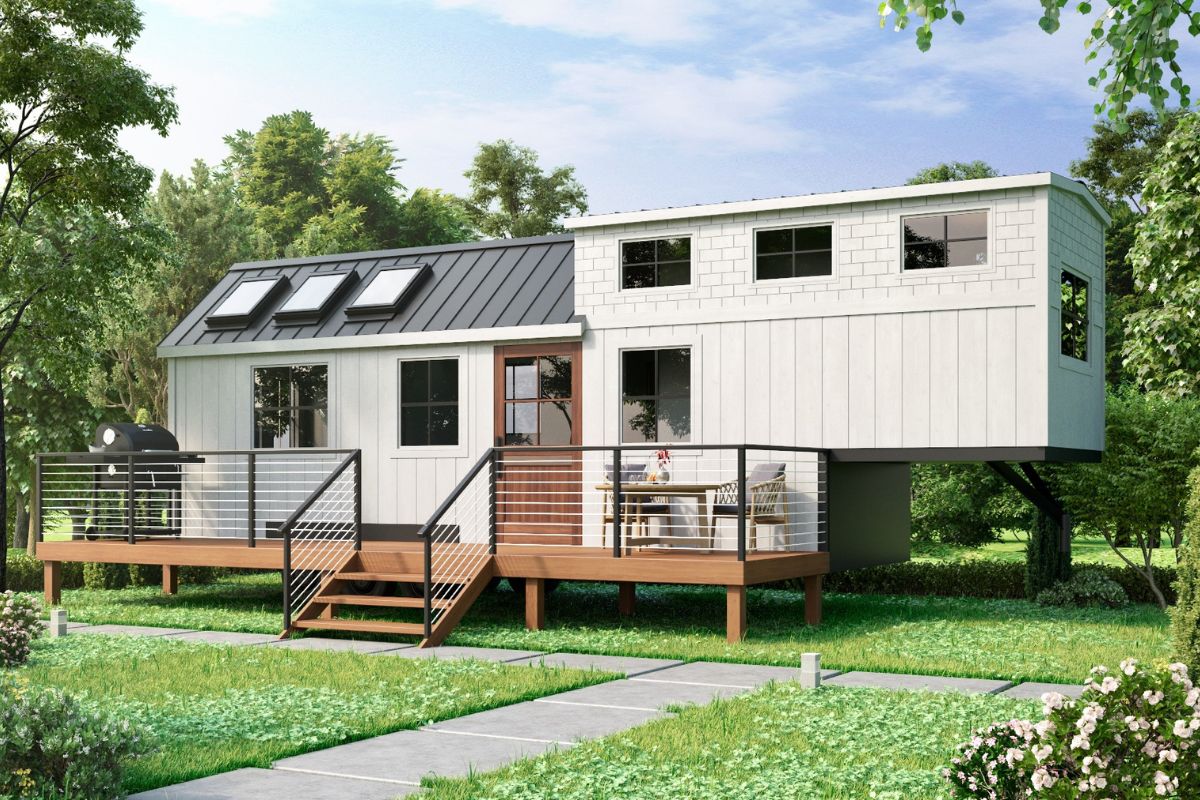Tiny homes are getting popular for being economical and minimalist. While they do not face most hassles of a large home, foundation issues are a common problem in tiny homes as well.
Their small size and alternative foundations, such as piers or trailers, make them vulnerable to even the slightest shifts in the ground. Even minor issues escalate into noticeable problems in tiny homes.
The foundation is an essential part of a home, resisting moisture, maintaining stability, and insulating the home from cold and warm weather. Identifying issues early helps to protect the foundation from further damage, maintain the comfort and safety of the home, and safeguard its structural integrity.
In this blog, Topeka foundation repair experts explain the major causes of foundation issues, how to spot the early signs of damage, and outlines preventive measures to safeguard the foundation. This will help homeowners avoid safety hazards and costly foundation repairs in the future.
Why Foundation Issues Matter for Tiny Homes
A tiny home is entirely anchored to its foundation. The tiny and light structure of the home means even the slightest problem with the foundation is noticeable, affecting the aesthetic, comfort, safety, and lifespan of the home.
Tiny homes often rely on non-traditional foundation systems, such as trailer chassis, pier and beam supports, concrete blocks, concrete slabs, or wooden skids. Each of these foundations has its own vulnerabilities. Slab foundations are prone to cracking and shifting and can be easily damaged.
Pier foundations offer less stability due to wood rot or soil movement. Trailer-based homes can suffer from settling or shifting. Concrete blocks are prone to moisture and flooding issues and require robust basement waterproofing solutions. Since these foundations are exposed and less robust than traditional slab foundations, issues can develop very quickly and turn into severe problems without regular inspection.
Common Causes of Foundation Issues in Tiny Homes
Several factors contribute to foundation issues in tiny homes.
Soil is the most common culprit of foundation issues. Expansive soils are prone to expansion and contraction due to changing moisture levels. This movement causes the ground to settle or heave unevenly, leading to foundation settlement. Erosion can also wash away supporting soil, making the foundation unstable.
Water pooling and poor drainage often lead to wood rot in piers, rust in trailer frames, or soil instability. A lack of proper gutters, drainage systems, and a properly graded landscape can lead to water pooling around the foundation. Water intrusion weakens the foundation by deteriorating its structures.
The support of the foundation, whether it is concrete, a wooden pier, or a slab, might not be sufficient to bear the weight of the entire structure. Wood may rot, and trailers might shift with soil movement, causing the foundation to shift and settle.
Mobile units that do not have proper anchoring are prone to structural shifts during movement or harsh weather events.

Warning Signs to Watch For
Homeowners must keep an eye out for these warning signs to detect issues early and take necessary actions.
Interior Signs of Foundation Trouble
Inside the home, notice when the doors and windows do not open or close properly. This indicates a warped frame due to foundation movement. Cracks in the walls and ceilings are common. Cracks appearing in the corners of doors and window frames indicate stress points.
Floors that feel uneven, slope on one side, or creak signal potential foundation settling. Countertops, cabinets, and other structures pulling away from the walls also indicate a settling or shifting foundation, affecting the entire home’s frame.
Exterior Indicators of Foundation Issues
Carefully inspect the entire perimeter of your exterior walls. Look for signs such as gaps between the foundation and the structure, which suggest movement or shifting.
Visible tilting and unevenness of the entire home when viewed from a distance also indicate a serious case of foundation settlement. If you notice cracks in the siding and skirting of the exterior walls, they signal foundational stress. Water pooling is another sign that the foundation is being damaged due to drainage issues.
Underneath the Home
Inspecting the underside is also important for trailer-based or pier-supported homes. Check for rust on metal plates, wood rot, or visible movement of piers. The ground should be firm and stable, as soft and spongy soil indicates that the foundation is not adequately supported. Moisture accumulation and pest infestation are also signs of weakened supports.

DIY Inspection Tips
A DIY inspection allows you to detect warning signs and take preventive measures to protect your foundation.
-
Foundations should be inspected monthly or seasonally, especially after heavy rain, storms, or relocation.
-
Gather important tools such as flashlights, a tape measure, a notepad, a screwdriver, and a small ball. A flashlight helps to check even the darkest corners and spots, while a carpenter’s level can help to check sloping or uneven floors. A moisture meter helps detect dampness in wooden supports or soil. The screwdriver is required to test rotting wood or soft spots in crawl spaces.
-
If you see cracks, take photos to monitor their growth. Measure the size of cracks and note their growth in the notepad. These act as a reference to track changes over time.
-
Pay special attention to new cracks, gaps, and changes in floor or door alignment. Any significant changes might require professional assessment and repairs.
When to Call a Professional
DIY inspections are the first step to ensure the health of your foundation. While cosmetic issues might seem harmless, it is difficult to differentiate them from serious structural problems. If you detect persistent or worsening signs such as large cracks, leaks, severe tilting, or compromised support, it is time to contact the professionals.
Waiting to call professionals can weaken the structural integrity of your entire home. Early intervention is healthy for your home and your wallet. Professionals have the tools and techniques to detect hidden issues and prevent more severe problems down the line. This saves you thousands of dollars in extensive repairs.
Look for professionals with years of experience repairing the foundation of your tiny home. Consult structural engineers and foundation specialists for a thorough assessment. They can identify hidden issues and suggest the most suitable solutions for your home’s foundation. Their repairs and reinforcements can enhance the safety and longevity of your home.
Preventive Measures
-
Since water is the main culprit of foundation damage, maintain a proper drainage system. Regularly maintain gutters and downspouts to drain water away from the home.
-
Use gravel and landscaping to stabilize soil by preventing erosion and movement.
-
Regularly check and adjust the trailers or pier supports to maintain a level structure.
-
Install skirting around the base of the foundation to protect from water, pests, and other weather elements. This prolongs the life of your foundation and prevents issues.
Protect the Foundation
Foundation issues are common in tiny homes and can be managed with proactive measures. Regular inspections help detect signs of trouble before they turn into extensive problems.
Carefully examine the interior, exterior, and underneath your home to identify any signs of damage. While drainage maintenance, landscaping, grading, and DIY tasks can prevent issues, professional inspection and repairs are necessary to warrant the safety and security of the foundation.






Share: